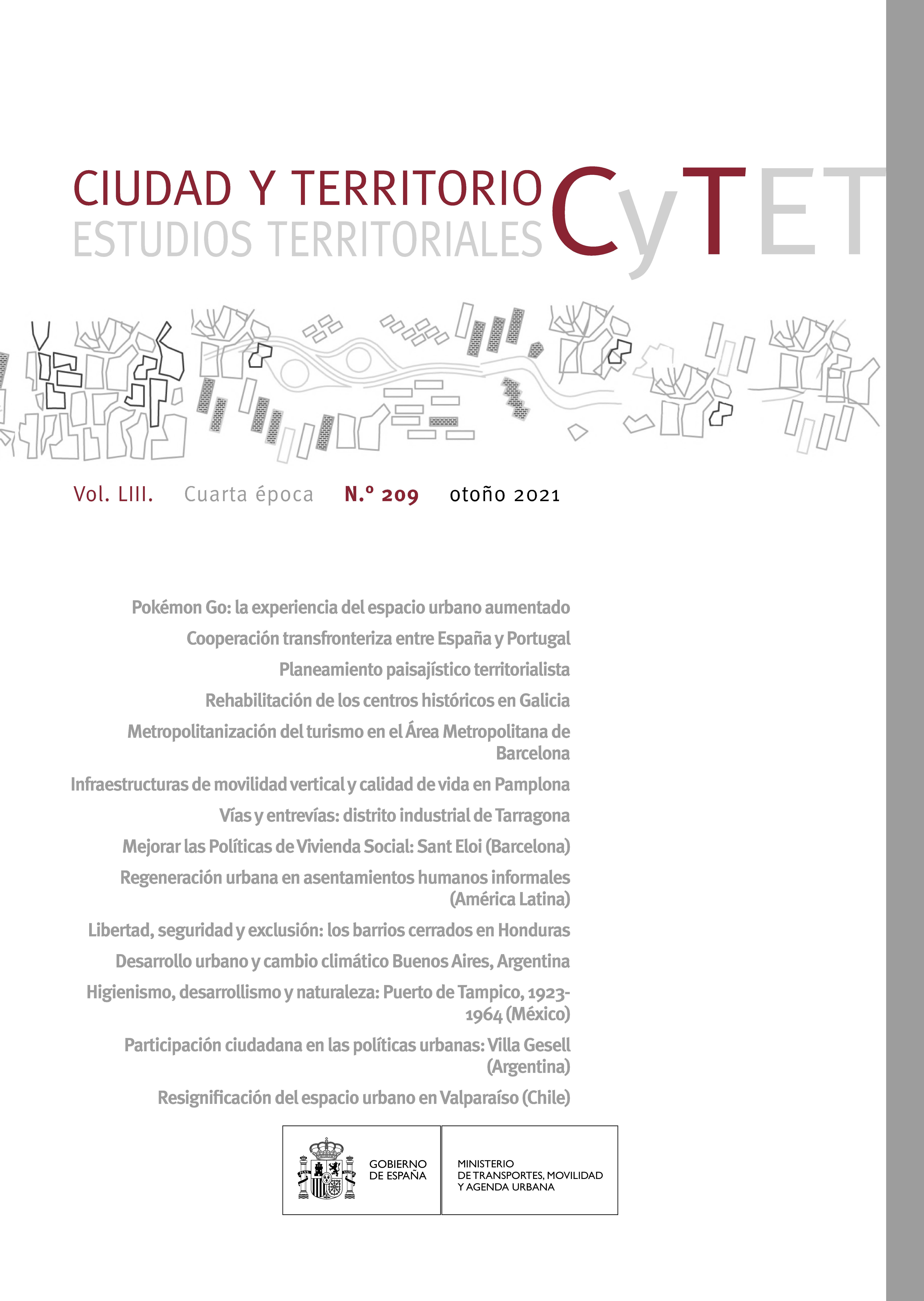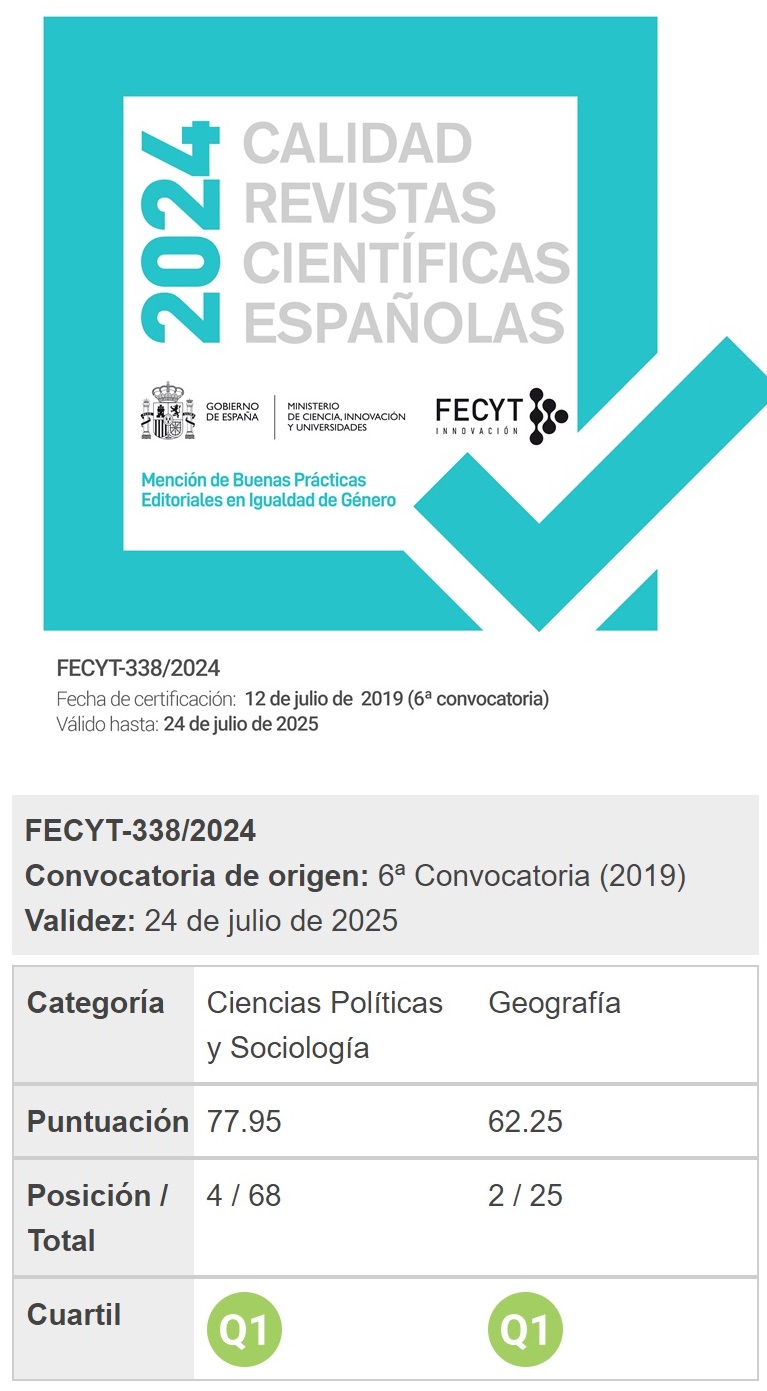Emoción, geografía y patrimonio: experiencia para resignificar el espacio urbano en Valparaíso (Chile)
DOI:
https://doi.org/10.37230/CyTET.2021.209.14Palabras clave:
Barrios, Memoria urbana, Patrimonio, Patrimonio inmaterialResumen
La gestión de una ciudad patrimonial, pone en diálogo desarrollo económico, diversidad cultural y marginación, donde una “geografía de las emociones” abre nuevas formas de comprender su valor. Se exploró en el sector La Matriz, barrio estigmatizado y con una incipiente gentrificación, cómo su patrimonio memorial organiza un mapa en el espacio urbano que difiere cómo lo ve la autoridad local. La recuperación de su memoria como modelo de trabajo, permitió resignificar el valor inmaterial de su paisaje. Los relatos de vida, conectaron a los habitantes con su territorio. Un nuevo mapa emergió donde hay una dualidad, dos barrios que conviven uno de día y otro de noche, uno del pasado y otro en el presente. En un marco de globalización, cuando el extranjero accede a este registro puede mirar de otra manera el paisaje y la gestión local toma un sentido de mayor sostenibilidad en el territorio
Descargas
Publicado
Cómo citar
Número
Sección
Licencia
Derechos de autor 2021 Maite Jiménez-Peralta, Gladys Jiménez-Alvarado, Gonzalo Bravo-Álvarez, Jacqueline Reveco-Gautier

Esta obra está bajo una licencia internacional Creative Commons Atribución-NoComercial-SinDerivadas 4.0.
Sin perjuicio de lo dispuesto en la legislación vigente sobre Propiedad Intelectual, y conforme a la misma, el/la los/las autor/a/es/as que publiquen en CyTET cede/n a título gratuito, de modo no exclusivo y sin límite temporal al Ministerio de Transportes, Movilidad y Agenda Urbana los derechos para difundir, reproducir, comunicar y distribuir en cualquier formato actual o futuro, en papel o electrónico, la versión original o derivada de su obra bajo licencia de Creative Commons Reconocimiento-NoComercial-SinObraDerivada 4.0 Internacional (CC BY-NC-ND 4.0), así como para incluir o ceder a terceros la inclusión de su contenido en índices, repositorios y bases de datos nacionales e internacionales, con referencia y reconocimiento en todo caso de la autoría del mismo.
Además, al realizar el envío, el/la los/las autor/a/es/as declara/n que se trata de un trabajo original en el que se reconocen las fuentes que han sido utilizadas en su estudio, comprometiéndose a respetar la evidencia científica y a no modificar los datos originales para verificar o refutar una hipótesis de partida; que el contenido esencial del mismo no ha sido publicado previamente ni se publicará en ninguna otra obra o revista mientras esté en proceso de evaluación en la revista CyTET; y que no se ha remitido simultáneamente a otra publicación.
Los autores deben firmar un Formulario de Cesión de Derechos, que les será enviado desde la Secretaría de CyTET una vez se acepte su artículo para ser publicado.
Con el objetivo de favorecer la difusión del conocimiento, CyTET se adhiere al movimiento de revistas de Open Access (OA) y entrega la totalidad de sus contenidos a diversos índices, repositorios y bases de datos nacionales e internacionales bajo este protocolo; por tanto, la remisión de un trabajo para ser publicado en la revista presupone la aceptación explícita por parte del autor/a de este método de distribución.
Se anima a las/os autoras/es a reproducir y alojar sus trabajos publicados en CyTET en repositorios institucionales, páginas web, etc. con la intención de contribuir a la mejora de la transferencia del conocimiento y de la citación de dichos trabajos.








 Enlace a CyTET en Linkedin
Enlace a CyTET en Linkedin